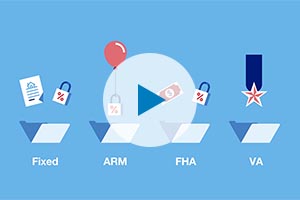Relocation inevitably requires an employee to confront uncertainties whether settling into a new work role or helping their family adjust to living in an unfamiliar destination. A particular area of concern for today’s transferees is the increasing cost of financing a home given rising mortgage interest rates. Higher interest rates can drive reluctance to relocate among employees who are homeowners, especially if market rates are significantly higher in the new location. This challenge could become widespread given the extended period of historically low rates that preceded today’s market volatility. Some notable trends for mobility program managers to be aware of include:
Home affordability, in general, remains a top concern among homebuyers with median U.S. home prices now far exceeding $400,000.
2022 began with most experts agreeing that rates could hover in the 3.5%-4% range. Rates hit almost 6% in June, and though they have since eased, the consensus among experts is a general trend toward higher rates in the range of 5.5% to 7% for the remainder of the year due to continued counter-inflation measures expected to be taken by the Fed.
Depending on the employee’s departure home rate, the combined impact of a new home mortgage payment of price and rate appreciation can be significant.
With competition for talent as intense as ever, sitting on the sidelines and waiting out these trends is not an option for most mobility program managers. Deliberate adjustments or additions to benefits may be necessary to ensure affordability concerns related to higher rates do not impede talent objectives. Below are three options that U.S. Bank recommends program managers consider when helping transferees navigate the high interest rate environment:
Points/utilizing a sliding scale: 1-point equals 1% of a borrower’s mortgage and is interest that is paid upfront at closing to lower a rate for the life of the loan. Historically, this has been used to assist relocating employees facing higher rates on a destination home purchase. Some corporate mobility policies have a sliding scale for points coverage tied to the current market rate.
A temporary buydown: A great tool to ease a borrower into a higher payment caused by today’s sudden increase in interest rates and higher cost of housing. Buydowns can be structured in multiple ways and are available on all loan products through U.S. Bank (conforming, jumbo and government loans). Typically, the benefit amount is incrementally stepped down—anywhere from 2-5 years—and can be dollar-based or interest rate-based. The dollar-based option is best suited to managing the benefit to a firm budget.
Mortgage Interest Differential Allowance (MIDA): Commonly requires a minimum rate differential between departure and destination homes to qualify, such as the quoted rate on the same product of 2% or 3% more than the current interest rate. This may be applied as a temporary buydown in either a dollar-based or rate-based model and if there is already a Cost-of-Living Allowance (COLA) provision, the MIDA can be applied in addition to those funds.
Adopting or enhancing these provisions within your relocation policies can help ease concerns related to today’s volatile rate environment, drive positive relocation experiences and ensure that mobility benefits support rather than hinder talent attraction and retention goals.
Your U.S. Bank client relationship team is available to guide you to options that best suit your program’s unique needs. The team is also positioned to offer insights into how best to track and report these sorts of programs, assist with composing a business case for utilization of the benefits, walk you through options for a particular transferee and help you gain a clear understanding of estimated costs.
Read more about how homebuying and mobility trends impact employees and connect with corporate relocation experts and home lending specialists.














































